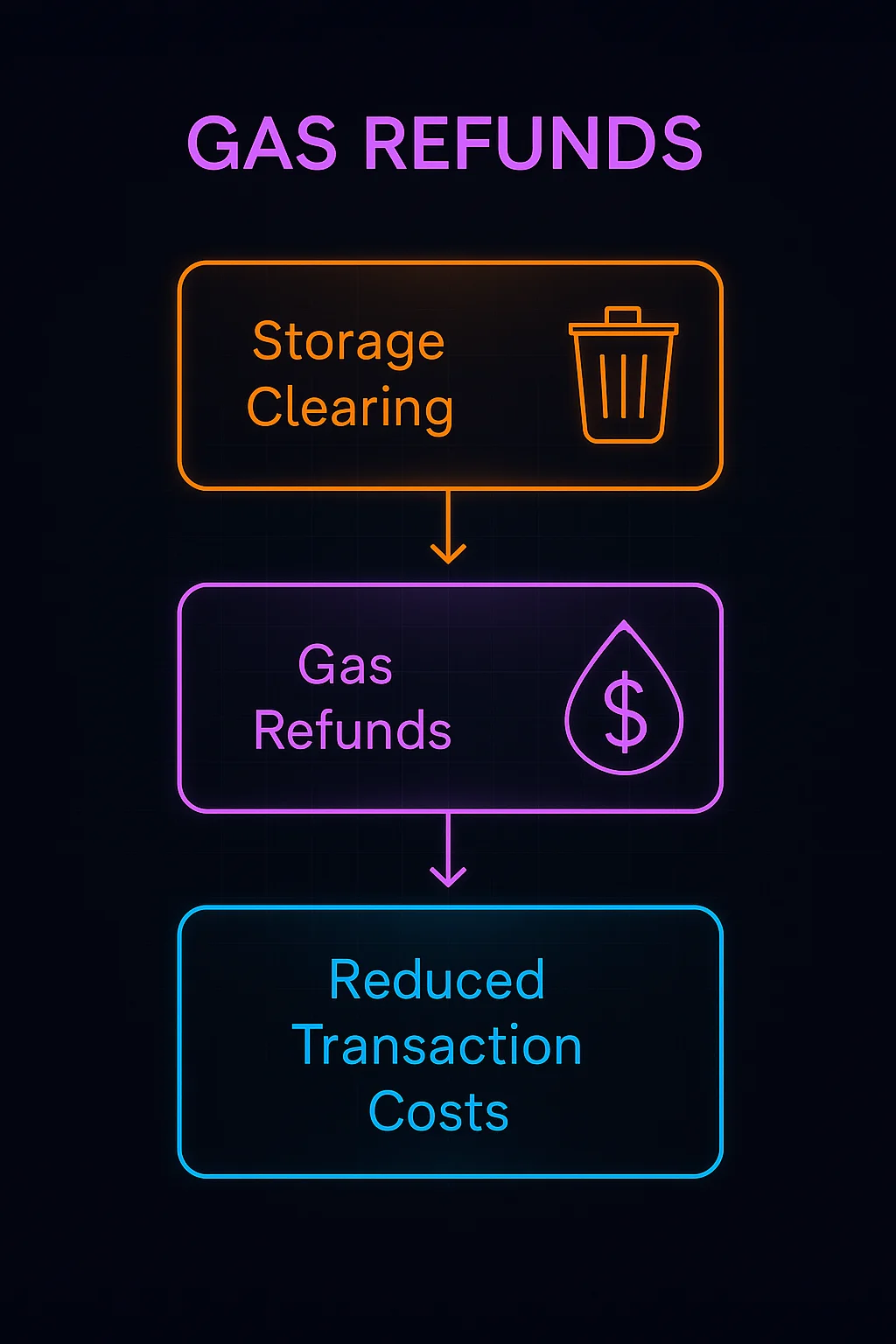Gas Refund Token
Gas Refund Token: Optimizing Transaction Costs
Gas refund tokens exploit Ethereum’s gas refund mechanism to reduce transaction costs by clearing unused storage. They’re like getting paid to clean up the blockchain.
A gas refund token uses Ethereum’s gas refund mechanism to partially offset transaction costs by clearing unused contract storage during token transfers. The protocol design creates gas rebates that reduce the effective cost of transactions.
How Gas Refund Tokens Work
Storage clearing operations receive gas refunds when smart contracts delete unused storage slots, providing rebates to transaction senders.
Token economics are designed so that normal token operations trigger storage clearing that generates gas refunds for users.
Rebate distribution typically happens automatically during token transfers or through separate claim mechanisms that distribute saved gas costs.

Real-World Examples
- Chi Gastoken was designed specifically to optimize gas costs through storage manipulation
- GST2 tokens provided gas savings during periods of high network congestion
- Various DeFi protocols have integrated gas optimization mechanisms into their token designs
Why Beginners Should Care
Cost savings can be significant during periods of high gas prices, making transactions more affordable for regular users.
Complexity trade-offs as gas refund tokens often have unusual mechanics that require understanding of Ethereum’s gas refund system.
Network effects mean gas refund benefits depend on widespread adoption and optimal usage patterns to generate meaningful savings.
Related Terms: Gas Fees, Gas Optimization, Storage Rent, Transaction Cost
